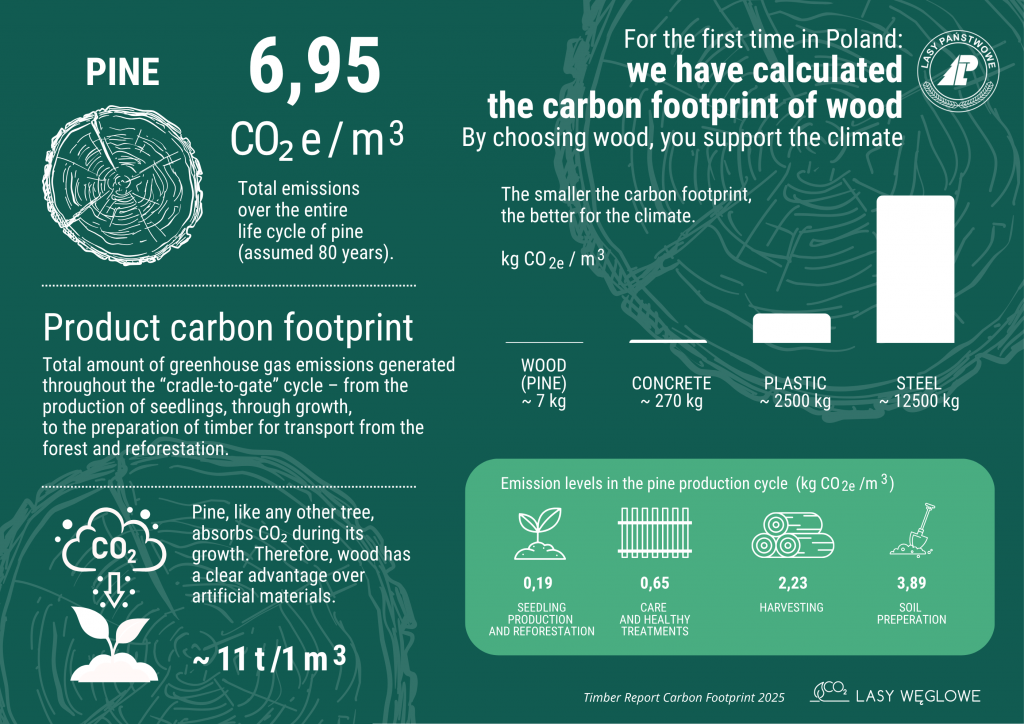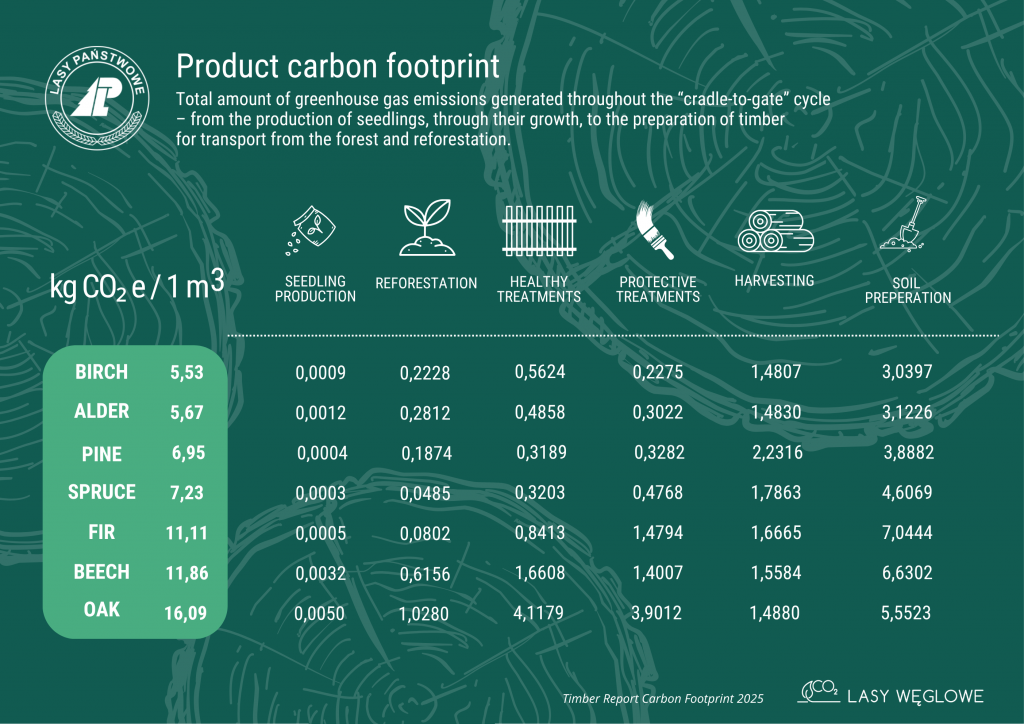The State Forests have developed a pioneering, nationwide study assessing the carbon footprint of seven tree species harvested in Poland: pine, spruce, fir, beech, oak, alder, and birch.
The results confirm that the carbon footprint of wood is significantly lower than that of other materials such as steel, concrete, or plastic.

A comprehensive analysis of the carbon footprint of wood was carried out in cooperation with Bureau Veritas Polska as part of the “Carbon Forests” project. The data obtained may be used, among other things, by the State Forests’ contractors for reports and statements required under EU and national regulations.
The process was conducted in accordance with the international GHG Protocol methodology, which serves to measure, report, and manage greenhouse gas emissions. The analysis covered the key product wood for the supply of which to the Polish market the State Forests are primarily responsible.
The production stages encompassed the entire “cradle-to-gate” life cycle of the product: from soil preparation for forest regeneration, through seedling production, planting, tending, and forest protection, to timber harvesting, transport to the dispatch site, and preparation of the area for subsequent reforestation.

Based on the analysis, the total average carbon footprint of 1 m³ of wood was calculated to be approximately 7 kg CO₂e. The lowest carbon footprint was recorded for birch—around 5.5 kg CO₂e, while the highest was observed for oak—approximately 16.1 kg CO₂e.
The study also confirmed that growing forests absorb far more carbon dioxide than the emissions generated by forest management activities. For example:
Emissions associated with the sale of pine wood in 2024 amounted to around 913,000 tons of CO₂, whereas CO₂ absorption by forests was estimated at 274 million tons.
For spruce wood, emissions reached about 53,000 tons of CO₂, while absorption exceeded 68 million tons.
Although beech wood has one of the higher carbon footprints per unit, CO₂ absorption amounted to as much as 118 million tons.
“The results clearly demonstrate that wood is not only a natural and fully renewable raw material, but also a low-emission one—thanks to the thoughtful and sustainable forest management practiced in Poland,” emphasizes Mariusz Błasiak, Head of the Department of Development Projects and Ownership Supervision. “The properties of wood and its wide range of applications—for example, in construction as a substitute for high-emission materials—offer an opportunity to reduce emissions and support climate action.”
The forest cultivation processes identified in the study provide a unique reference point for Polish forestry management. The next step will involve further refinement of calculation methods and educational initiatives aimed at highlighting the role of wood and forestry in combating climate change.
